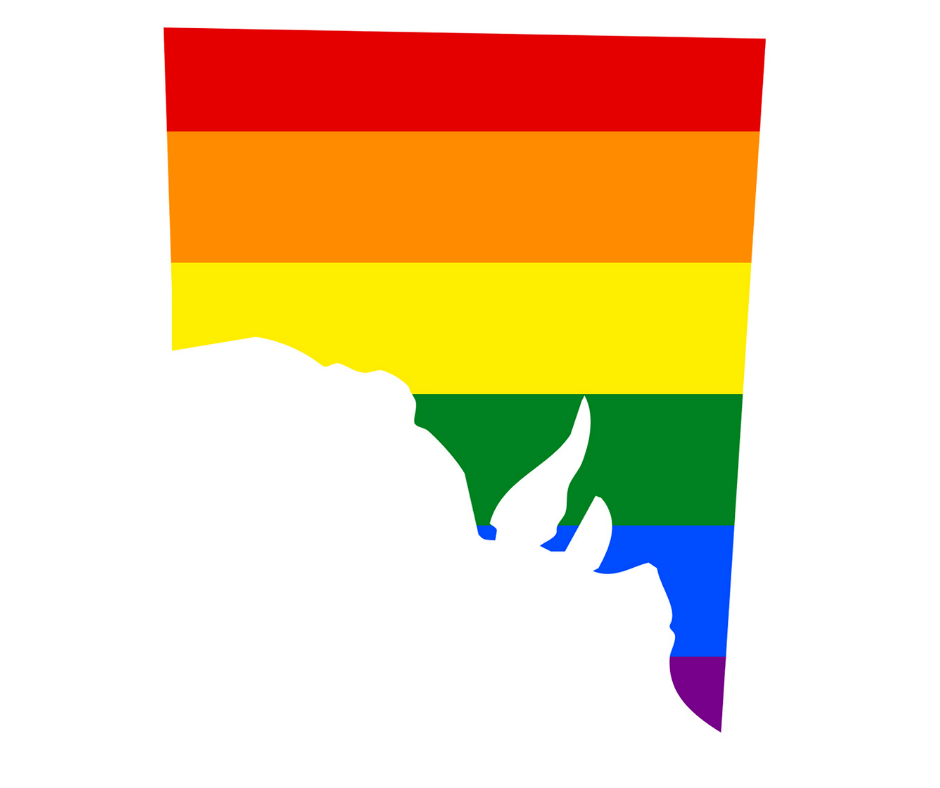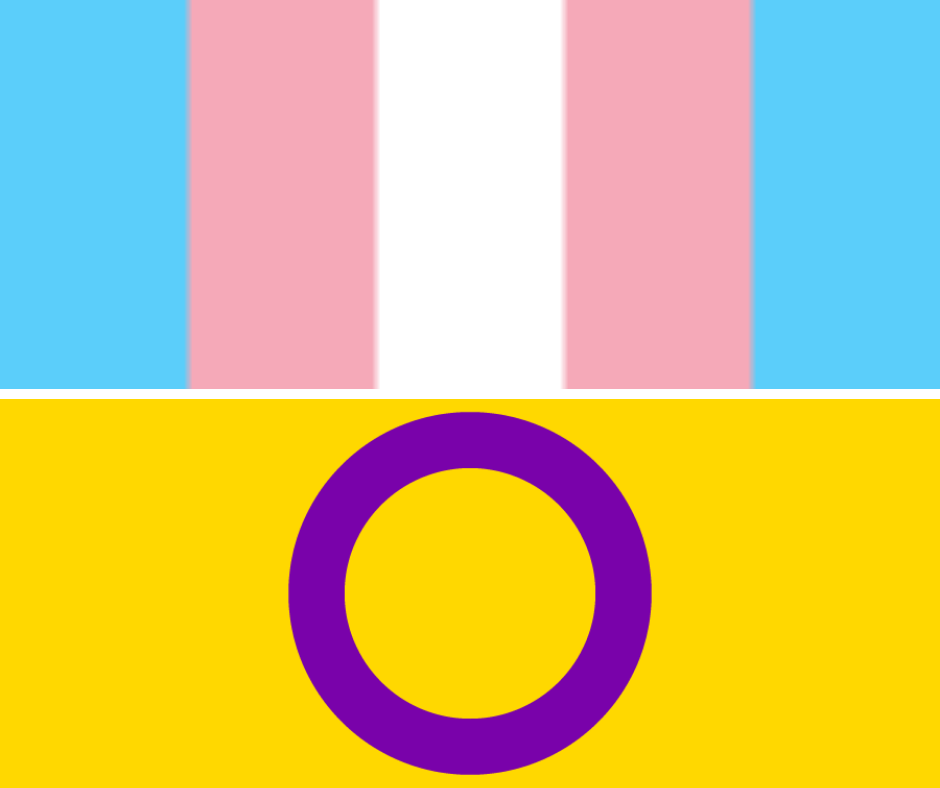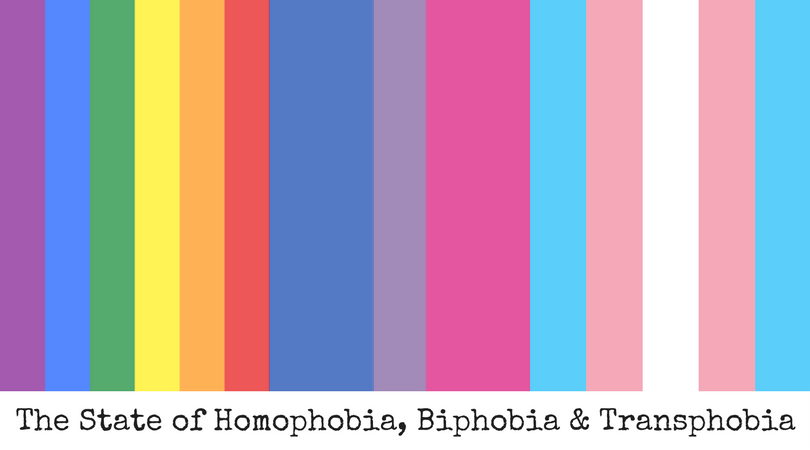Problem: Transgender and intersex workers are not explicitly protected under the Fair Work Act 2009 (Cth).
While discrimination on the basis of sexual orientation, gender identity and intersex status are all prohibited under the Sex Discrimination Act 1984 (Cth), only sexual orientation is included as a relevant attribute in the Fair Work Act for the purposes of protections against ‘adverse action’ (section 351(1)), and ‘unlawful termination’ (section 772(1)(f)), as well as in sections covering the contents of awards (section 153) and enterprise agreements (section 195), and the functions of the Fair Work Commission (section 578(c)).
This means that while the ability of lesbian, gay and bisexual workers to bring complaints to the Fair Work Commission (FWC) is certain, there is significant doubt about whether trans, nonbinary and intersex employees can do the same.
In practice, a trans worker who is mistreated in the workplace because of their gender identity, or an intersex employee who is fired on the basis of their sex characteristics, may be unable to have their issue resolved quickly and at low cost via the FWC, and instead be forced to go through a much less timely, and potentially more expensive, complaint to the Australian Human Rights Commission (and then in federal court after that).
This is a completely unjustified discrepancy in the rights of LG and B Australians on one hand, and transgender and intersex people on the other, and it must be resolved.
Solution: Amend the Fair Work Act to explicitly protect transgender and intersex workers.
Simple, right? Well, it certainly should be.
Sadly, however, the Liberal/National Government has proven itself to be completely uninterested in doing anything to address this most straightforward of problems.
I have been raising the lack of explicit protections for trans, nonbinary and intersex workers in the Fair Work Act since Malcolm Turnbull was Prime Minister. And on multiple occasions since then, to multiple Attorneys-General.
Not only have they refused to take action, but last September current Attorney-General Michaelia Cash, and the Morrison Government generally, voted *against* amendments to the Fair Work Act which would have, at a minimum, brought it into line with Sex Discrimination Act (SDA).
What makes that vote even more disappointing is the then Opposition, under Tony Abbott, had actually voted in favour of protecting transgender and intersex people in the SDA back in 2013 – meaning the Liberal/National Coalition has gone *backwards* in its support for these groups in the subsequent eight years.
In any event, with the election expected to be called today (and at the latest by Monday 18 April), it is clear the lack of explicit protections for trans, nonbinary and intersex workers in the Fair Work Act will not be addressed this term.
In which case, I think we should ensure that finally addressing this problem is made an election issue for the upcoming poll (on May 14 or 21).
What policy commitments do we want?
From my perspective, any election commitment on this issue should comprise four, inter-related parts.
First, a commitment to ensure the Fair Work Act explicitly covers trans, nonbinary and intersex workers.
Second, a commitment to use best practice terminology to do so.
This includes adding a protected attribute of ‘gender identity’, using the definition in section 4 of the Sex Discrimination Act (‘the gender-related identity, appearance or mannerisms or other gender-related characteristics of a person (whether by way of medical intervention or not), with or without regard to the person’s designated sex at birth’) as a starting point, and finalised in consultation with trans community organisations.
However, while the SDA currently uses the protected attribute ‘intersex status’ (defined in section 4 as ‘the status of having physical, hormonal or genetic features that are (a) neither wholly female nor wholly male; or (b) a combination of female and male; or (c) neither female nor male’) this is no longer supported by the intersex community, at least in part because it has been interpreted by some as relating to identity rather than biology.
Instead, the best practice terminology is now ‘sex characteristics’, as called for in the historic March 2017 Darlington Statement, and most recently defined in the Equal Opportunity Act 2010 (Vic) as:
‘a person’s physical features relating to sex, including-
(a) genitalia and other sexual and reproductive parts of the person’s anatomy; and
(b) the person’s chromosomes, genes, hormones, and secondary physical features that emerge as a result of puberty.’
The definition of sex characteristics should also be finalised in consultation with intersex community organisations, particularly Intersex Human Rights Australia.
Third, if the attribute of ‘sex characteristics’ is added to the Fair Work Act, the Parliament should use the same opportunity to update the Sex Discrimination Act, replacing the protected attribute of intersex status with sex characteristics.
Fourth, a commitment to make these reforms within the first 12 months of the next Parliamentary term.
This discrepancy has existed since the passage of the Sex Discrimination Amendment (Sexual Orientation, Gender Identity and Intersex Status) Act 2013, in June of that year.
Which means by mid-2023 it would have been a full decade of trans, nonbinary and intersex workers having less clear, and potentially lesser, workplace rights than lesbian, gay and bisexual employees.
That is far too long for workers to wait for what are basic protections, making a request that it be fixed in the next year entirely reasonable.
In this context, today I sent the below emails to the Government, Opposition and Greens.
The email to the Government highlights their rejection of amendments to the Fair Work Act in September last year, and asks them to take concrete action to protect trans, nonbinary and intersex workers as a matter of urgency.
The email to the Opposition welcomes their vote to support adding ‘intersex status’ to the Fair Work Act last September, while calling on them to go further, and commit to instead add the protected attribute of ‘sex characteristics’ if they form Government.
Finally, the email to the Greens thanks them for their leadership on this issue to date (it was their amendments that were voted on last year) and urges them to continue to prioritise this reform in the upcoming term of Parliament.
*****
Senator the Hon Michaelia Cash
Attorney-General
Via email: senator.cash@aph.gov.au
10 April 2022
Dear Senator Cash
Please commit to protecting trans, nonbinary and intersex workers in the Fair Work Act 2009 (Cth)
All workers should be protected against adverse action, and unlawful termination, on the basis of who they are.
These protections must include transgender and intersex employees.
As you are aware, these groups are not explicitly covered by relevant provisions of the Fair Work Act 2009 (Cth), unlike other protected attributes like race, sex, age, disability, religious belief and even sexual orientation.
In this context, it was extremely disappointing that you, and other Government Senators, voted to reject straight-forward amendments to address this discrepancy in September 2021, thus leaving the position of trans, nonbinary and intersex workers unclear.
In light of the upcoming federal election, I call on you, and the Liberal/National Coalition, to unequivocally commit to fixing this problem as a matter of priority next term.
Not only would this be the right thing to do in principle, it would also be consistent with the actions of the then Abbott Opposition in 2013 (of which you were a member), to support the prohibition of discrimination on the basis of gender identity and intersex status in the Sex Discrimination Act 1984 (Cth).
A commitment in four, inter-related parts
From my perspective, this commitment should include the following four, closely-linked, elements:
First, a commitment to protect transgender and intersex workers on exactly the same basis as other groups.
Second, a commitment to add the protected attributes of ‘gender identity’ (based on the definition in the Sex Discrimination Act, and finalised in consultation with transgender community groups) and ‘sex characteristics’ (which is now best practice rather than intersex status, based on the recently-added definition in the Equal Opportunity Act 2010 (Vic), and finalised in consultation with Intersex Human Rights Australia) to the Fair Work Act.
Third, a commitment to use the same legislation to replace the protected attribute of intersex status in the Sex Discrimination Act with the best practice terminology sex characteristics.
Fourth, a commitment to complete the above steps within the first 12 months of the next Parliamentary term, especially given trans, nonbinary and intersex workers have been waiting for these protections since mid-2013.
I look forward to receiving your response to this correspondence, and sincerely hope you are able to provide clear promises on these issues on behalf of the Morrison Liberal/National Government.
Please note that, as your commitments (or lack of commitments) on the above will be in the public interest, I will publish the contents of any response I receive on my personal website: www.alastairlawrie.net
Sincerely,
Alastair Lawrie
*****
The Hon Mark Dreyfus QC MP
Shadow Attorney-General
10 April 2022
Dear Mr Dreyfus
Please commit to protecting trans, nonbinary and intersex workers in the Fair Work Act 2009 (Cth)
All workers should be protected against adverse action, and unlawful termination, on the basis of who they are.
These protections must include transgender and intersex employees.
As you are aware, these groups are not explicitly covered by relevant provisions of the Fair Work Act 2009 (Cth), unlike other protected attributes like race, sex, age, disability, religious belief and even sexual orientation.
In this context, the ALP’s support for amendments in September 2021 to add gender identity and intersex status as protected attributes in the Fair Work Act was obviously welcome, although it was disappointing this did not extend to supporting the best practice terminology of sex characteristics.
In light of the upcoming federal election, I call on you, and the Australian Labor Party, to commit to protecting trans, nonbinary and intersex workers as a matter of priority next term.
Not only would this be the right thing to do in principle, it would also be consistent with, and build on, one of the major achievements of the most recent Labor Government, the passage of the historic Sex Discrimination Amendment (Sexual Orientation, Gender Identity and Intersex Status) Act 2013 (during your term as Attorney-General).
A commitment in four, inter-related parts
From my perspective, this commitment should include the following four, closely-linked, elements:
First, a commitment to protect transgender and intersex workers on exactly the same basis as other groups.
Second, a commitment to add the protected attributes of ‘gender identity’ (based on the definition in the Sex Discrimination Act, and finalised in consultation with transgender community groups) and ‘sex characteristics’ (which is now best practice rather than intersex status, based on the recently-added definition in the Equal Opportunity Act 2010 (Vic), and finalised in consultation with Intersex Human Rights Australia) to the Fair Work Act.
Third, a commitment to use the same legislation to replace the protected attribute of intersex status in the Sex Discrimination Act with the best practice terminology sex characteristics.
Fourth, a commitment to complete the above steps within the first 12 months of the next Parliamentary term, especially given trans, nonbinary and intersex workers have been waiting for these protections since mid-2013.
I look forward to receiving your response to this correspondence, and sincerely hope you are able to provide clear promises on these issues on behalf of the Albanese Labor Opposition.
Please note that, as your commitments (or lack of commitments) on the above will be in the public interest, I will publish the contents of any response I receive on my personal website: www.alastairlawrie.net
Sincerely,
Alastair Lawrie
*****
Senator Janet Rice
Australian Greens
Via email: senator.rice@aph.gov.au
10 April 2022
Dear Senator Rice
Lack of explicit protections for trans, nonbinary and intersex workers under the Fair Work Act 2009 (Cth)
Thank you for your ongoing leadership on this issue in the Commonwealth Parliament.
This includes regularly raising the lack of explicit protections for transgender and intersex employees in the Fair Work Act 2009 (Cth) during Senate Estimates hearings.
Most importantly, thank you for introducing amendments to the Sex Discrimination and Fair Work (Respect at Work) Amendment Bill 2021 in September last year which, at best, would have added gender identity and sex characteristics as protected attributes to the Fair Work Act or, at a minimum, would have included gender identity and intersex status instead.
As you know, I shared your disappointment when neither set of amendments was successful.
However, I also share your passion to ensure this work is finally completed.
For your information, and in light of the upcoming federal election, this morning I have written to both the Attorney-General and Shadow Attorney-General calling on the Government and Opposition respectively to promise the following:
First, a commitment to protect transgender and intersex workers on exactly the same basis as other groups.
Second, a commitment to add the protected attributes of ‘gender identity’ (based on the definition in the Sex Discrimination Act, and finalised in consultation with transgender community groups) and ‘sex characteristics’ (which is now best practice rather than intersex status, based on the recently-added definition in the Equal Opportunity Act 2010 (Vic), and finalised in consultation with Intersex Human Rights Australia) to the Fair Work Act.
Third, a commitment to use the same legislation to replace the protected attribute of intersex status in the Sex Discrimination Act with the best practice terminology sex characteristics.
Fourth, a commitment to complete the above steps within the first 12 months of the next Parliamentary term, especially given trans, nonbinary and intersex workers have been waiting for these protections since mid-2013.
Ideally, both major parties will commit to protecting the rights of trans, nonbinary and intersex workers, and this reform will be passed quickly and on a bipartisan basis.
However, in the event that neither of the major parties is willing to make these promises, or that they do but do not follow through on them with appropriate and timely action, I urge you to continue fighting on this issue.
In particular, if no amendments are forthcoming by mid-2023, I call on you to reintroduce your amendments to the Fair Work Act either as part of a relevant legislative package, or via a private members Bill.
I look forward to receiving your response to this correspondence.
As with my emails to the Government and Opposition, please note that, as your response on the above will be in the public interest, I will publish the contents of any correspondence I receive on my personal website: www.alastairlawrie.net
Sincerely,
Alastair Lawrie
*****
Update, Sunday 8 May 2022:
On Friday (6 May) I received the following response from Greens Senator, and LGBTIQA+ spokesperson, Janet Rice:
Dear Alistair Lawrie
Thank you for your correspondence of 10 April 2022, in relation to improvements to antidiscrimination legislation, in order to protect members of LGBTIQA+ communities.
I would like to thank you for your tireless and important advocacy on such important issues, and in particular the legal expertise you have brought to issues which have such crucial importance for people’s lives.
Let me re-affirm the Greens’ commitment to fighting for LGBTIQA+ rights, as set out in our policy.
We will continue to advocate for the necessary changes to the Fair Work Act 2009 to ensure that workers who are trans or have intersex variations are protected on the same basis as other groups. That should include appropriate definitions in relation to gender identity and sex characteristics, developed in consultation with relevant communities. Those changes should also be accompanied by relevant updates to the Sex Discrimination Act 1984 as needed.
As you are aware, the Greens have a significant opportunity in this Parliament to achieve balance of power, potentially in both the House of Representatives and the Senate. We will continue to advocate as forcefully as we are able to, for these changes and others to protect the rights of LGBTIQA+ people.
Yours sincerely
Senator Janet Rice
Australian Greens LGBTIQA+ spokesperson
This is obviously encouraging, including commitments to advocate for the introduction of gender identity and sex characteristics as protected attributes in the Fair Work Act, with definitions to be developed in consultation with trans and intersex communities.
Disappointingly, I am yet to receive any response from either Senator Cash on behalf of the Government, or Mark Dreyfus on behalf of the Australian Labor Party.
Today I have written again to both, asking for any response to be provided by Sunday 15 May, so that they can be published prior to the election. I will obviously update this post if and when any such response is received.
*****
Update Wednesday 18 May:
Well, the update is really that there is nothing to update.
Unfortunately, despite writing again to both the Attorney-General Michaelia Cash and her Shadow Mark Dreyfus, I have received no response from either the Morrison Liberal/National Coalition, or the Albanese Labor Party. Which is perhaps not surprising in the case of the former (given they voted against protecting trans, gender diverse and intersex workers in the Fair Work Act in September last year), but is more disappointing in the case of the latter given they actually supported including gender identity and intersex status as protected attributes at a minimum (although need to go one step further by supporting the best practice terminology of sex characteristics).
I will of course update the post further if any response is received between now (COB Wednesday) and the opening of polls on Saturday morning.
NB This post is written in a personal capacity, and does not reflect the views of employers past or present.

Commonwealth Attorney-General Michaelia Cash and Shadow Attorney-General Mark Dreyfus
If you have enjoyed reading this article, please consider subscribing to receive future posts, via the right-hand scroll bar on the desktop version of this blog or near the bottom of the page on mobile. You can also follow me on twitter @alawriedejesus










